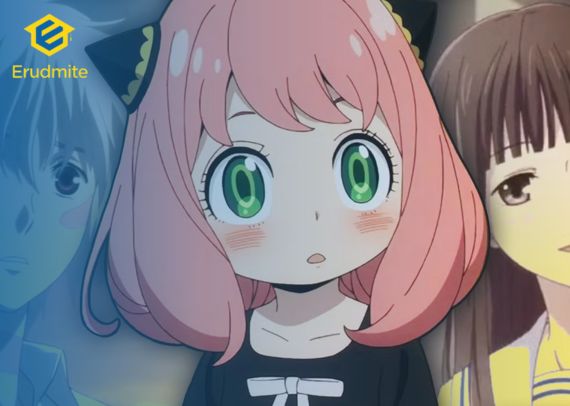
For decades, anime was often dismissed as “just cartoons” especially by those outside Japan. But what many mocked or misunderstood as childish entertainment has now grown into one of the most influential and profitable sectors in global media.
From Naruto to Attack on Titan, Demon Slayer to One Piece, anime is no longer a niche interest it’s a cultural phenomenon. And with that scale comes a booming job market that students and young professionals can no longer afford to ignore.
Anime Isn’t Just Entertainment It’s a Global Industry
According to Grand View Research, the global anime market size was valued at over $24 billion in 2023 and is projected to grow by more than 9% annually over the next five years.
Platforms like Netflix, Crunchyroll, and Disney+ are heavily investing in anime content. In fact, Netflix announced in 2022 that it was producing more than 40 new anime titles in a single year. That’s not just storytelling — that’s strategy.
Countries like the US, UK, UAE, India, and even Saudi Arabia are witnessing a massive rise in anime viewership. Anime expos, cosplay conventions, fan clubs, and university societies are thriving in cities like London, Dubai, and Los Angeles.
From Fan to Creator: Why Students Should Pay Attention
The anime industry is not limited to illustrators or voice actors. Behind every episode lies a full-stack production team:
- Storyboard Artists
- 2D & 3D Animators
- Sound Designers
- Translators & Subtitle Editors
- Scriptwriters & Cultural Consultants
- Marketing & Licensing Professionals
- Video Editors & Motion Graphic Designers
The good news? Many of these roles are open to international professionals not just in Japan, but across localised production hubs in countries like South Korea, Malaysia, and the UK.
High Costs, High Demand And High Value for Skilled Professionals
Producing a single episode of top-tier anime like One Piece or Attack on Titan can cost anywhere between $100,000 to $300,000. These aren’t small-budget cartoons — they are high-stakes productions employing hundreds of professionals.
From storyboard artists and background designers to sound engineers and motion editors, the demand for technical roles in anime production is real — and growing. These technicians, though often behind the scenes, are well-compensated specialists, especially as the global appetite for anime expands.
For international students or young professionals passionate about anime but unsure of where they’d fit in — this is your answer. You don’t need to be a character designer to break into the industry. There are dozens of entry points, especially if you build the right skills and combine them with creative passion.
Education That Aligns with Anime Careers
In the UK, courses in Digital Media, Creative Computing, Animation, Sound Production, and Marketing & Communications are directly aligned with the anime production ecosystem.
For example, studying Digital Marketing can help students enter anime streaming firms, fan merch brands, or social platforms targeting Gen Z anime viewers. Similarly, courses in Design, Media Production, or even Japanese language and culture can open global opportunities in anime localisation.
And thanks to the UK’s 18-month Graduate Route, international students have time to explore these creative pathways post-study.
Erudmite’s Take
At Erudmite, we believe it’s time to stop laughing at anime as a career path and start looking at it for what it really is: a serious, expanding global industry with real money, real jobs, and real creativity.
If you or your child is passionate about anime, don’t kill the dream structure it. Let’s turn that love for storytelling and visuals into a skill set that pays.
We’ll help you explore UK-based education options that align with your interests, from graphic design to digital content, and even language and cultural studies. Anime might be drawn in ink, but the future it offers is real.
Final Word
The next time someone scoffs and says, “Who watches these cartoons?” remember this:
- Anime conventions attract hundreds of thousands of global attendees.
- Top studios like MAPPA and Toei Animation work on budgets rivaling Hollywood.
- And a single successful series like One Piece has generated billions through episodes, movies, video games, merchandise, and live-action adaptations.
If you’re passionate about anime, now is the time to act. Turn your passion into a profession with the right guidance, global exposure, and educational foundation.
Because what many still mock and call “cartoons”… is actually an empire in the making.
FAQ: Studying for a Career in Anime
Q1. Do I need to go to Japan to work in anime?
Not necessarily. Many anime projects are now produced or co-produced by international teams. You can find opportunities in studios across Asia, Europe, and the US.
Q2. What should I study if I want to work in the anime industry?
Courses like Animation, Digital Media, Video Production, Sound Design, and Marketing are directly relevant. Even Japanese language and culture studies can open doors in anime localisation.
Q3. Can international students get anime-related jobs after studying in the UK?
Yes. With the UK’s 18-month Graduate Route, students have time to explore creative industries, apply to relevant roles, and build freelance portfolios especially in digital media and animation.
Q4. Is there any money in anime careers?
Absolutely. With per-episode production costs ranging from $100,000 to $300,000, studios hire a wide array of skilled professionals — many of whom are well-compensated, especially in technical or post-production roles.
Q5. How can Erudmite help?
We help students identify the right courses, apply to UK universities, and shape a career plan that turns creative passions into viable professional paths including in anime, gaming, media, and design.
